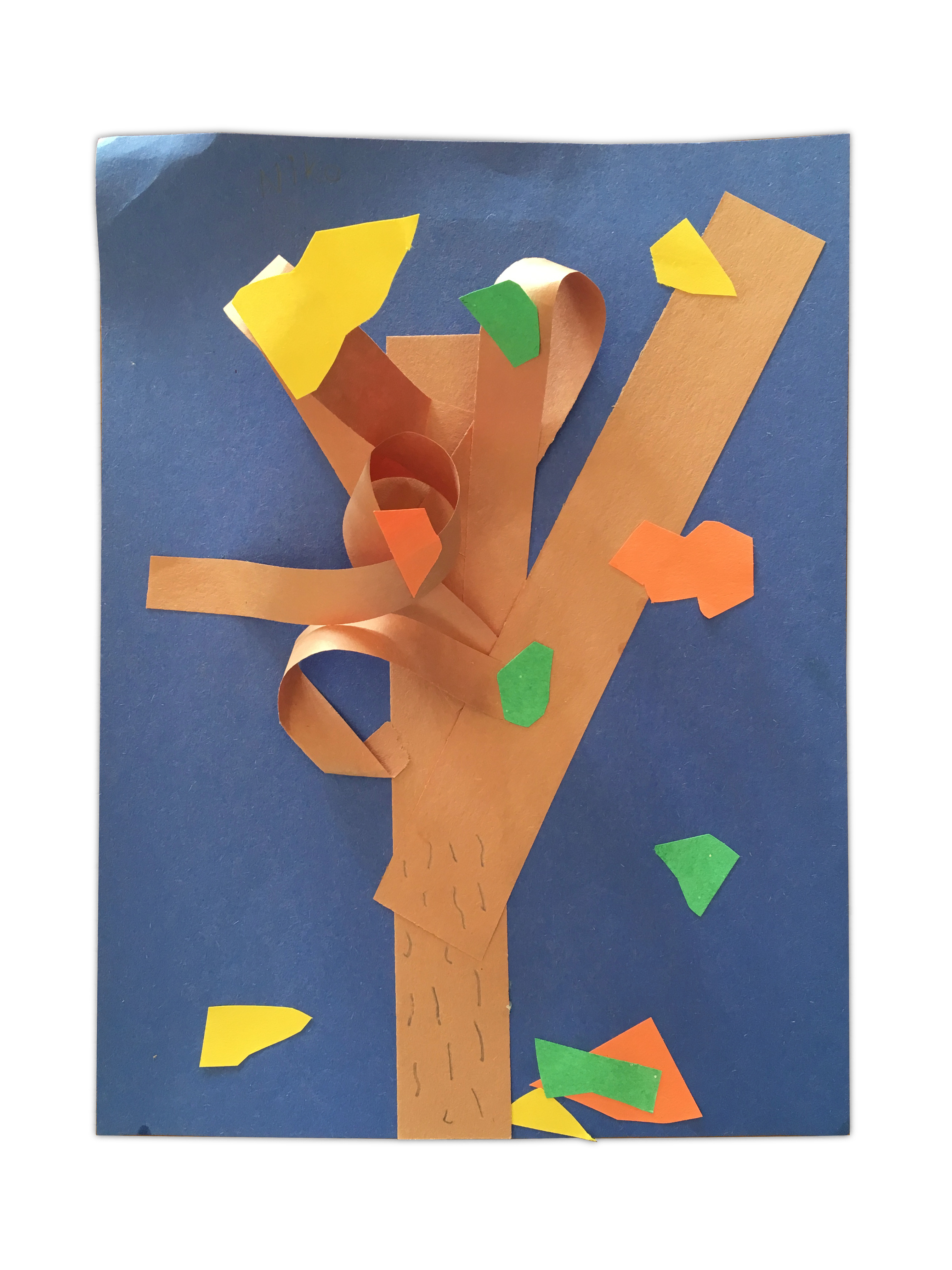Teaching Portfolio
Samples of student work produced as an arts educator
Fall Forest
Cal CREATE
Sylvia Mendez Elementary School
Berkeley, CA
Grade K-5
The natural variation in autumn trees invites individual creative expression. This project encourages students to notice the details of seasonal changes in their own neighborhoods and backyards. A guided discussion of their observations primes students to explore different paper craft techniques including twirling, twisting, crimping, and looping. Drawing inspiration from whimsical children’s book illustrations, students make intentional decisions about leaf size, shape, and pattern to produce a forest of distinctly unique trees.






Cartography
Cal CREATE
Cragmont Elementary School
Berkeley, CA
Grade K-2
Maps are not only a means to locate your place in the world, but also a generative method to produce new places in different worlds. They are both a tool for understanding and a site of imagination that operate across many scales and conventions. This lesson begins with a guided discussion aided by a variety of maps including topographic hiking maps, schematic subway maps, and road atlases. Using the inquiry-based teaching method of visual thinking strategies, students are encouraged to notice different representational techniques and infer how the 2d map relates to the 3d world we inhabit. Depending on student age, the discussion can be differentiated to introduce conventions like a legend, a compass rose, and scale. Students can choose to map existing places with which they are intimately familiar, for example, their room or neighborhood. They are also encouraged to create maps that illustrate otherwise imaginary places. In other variations on this lesson, students design and send a postcard from their mapped location—past, present, future, real, or otherwise.


1 – “Goatville” map including various topographic terrains and water features
2 – imaginary map including playground features such as ladders, stairs, and slides
Cityville
KoKo NYC
CAMBA Kids Unlimited
PS 92 Adrian Hegeman Elementary School
Prospect Lefferts Garden; Brooklyn, NY
Grade 2
In subsequent classes following an initial cartography lesson, students continue to engage with concepts of the city by designing their own collective urban environment. By repurposing recyclable materials like cardboard, egg cartons, paper towel rolls, plastic containers, and other found objects, students create their own buildings and infrastructure. Each class, students are introduced to different urban typologies including housing, playgrounds, transportation, and green space. At the end of each class, students share their work, ask and answer each other’s questions, and add their contribution to the growing metropolis. To further encourage a diversity of projects, students may draw index cards labeled with different building types, colors, shapes, or materials as inspiration.




Inventor’s Lab
KoKo NYC
CAMBA Kids Unlimited
PS 92 Adrian Hegeman Elementary School
Prospect Lefferts Garden; Brooklyn, NY
Grade 3-4
In this series of classes, students are introduced to the 6 simple machines (inclined plane, wedge, lever, wheel-and-axle, screw, and pulley.) Using recyclable materials, students prototype their own inventions, applying their knowledge of simple machines to solve real-life problems.

1– no-tape cardboard tower challenge
2 – inclined plane marble run
Simple Machines Scavenger Hunt
KoKo NYC
Prospect Park
Brooklyn, NY
Grade K-2 and 3-5
This lesson is an engaging activity for students to synthesize their growing knowledge of simple machines. Instead of a standard class of building and inventing, students are split into smaller teams. Each student receives a mini zine-style 8-panel booklet to document their observations. Each team walks around the park/neighborhood identifying and drawing different examples of simple machines in everyday life. As usual, class concludes with a debrief and share. This Inventor’s Lab class was developed in line with KoKo NYC’s core educational values and was conducted entirely outdoors in adherence to public health guidelines regarding Covid-19.
In other variations on this activity for younger classes, the group collectively and collaboratively determines the scavenger hunt. Each student defines a clue for the group to search for. For example: find something red, find something made of metal, or find something with a unique texture.

1,2 – sketches of simple machines in Prospect Park as observed by grade 3-5 students
3,4 – K-2 class on a collectively determined scavenger hunt around Prospect Park